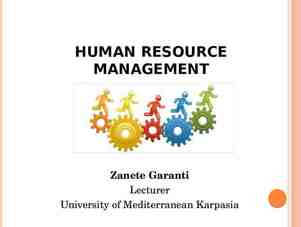UNIT 8-1 RESPONSES TO THE ENVIRONMENT
20 Slides4.28 MB

UNIT 8-1 RESPONSES TO THE ENVIRONMENT

E N D U R I N G U N D E R S TA N D I N G & L E A R N I N G O B J E C T I V E : ENDURING UNDERSTANDING: Timing and coordination of biological mechanisms involved in growth, reproduction and homeostasis depend on organisms responding to environmental cues. LEARNING OBJECTIVE: Explain how the behavioral and/or physiological response of an organism is related to changes in the internal or external environment.

HOW ORGANISMS RESPOND TO CHANGE Organisms respond to changes in their environment through behavioral and physiological mechanisms. Examples: 1.Photoperiodism and phototropism in plants 2.Taxis and kinesis in animals 3.Nocturnal and diurnal activity

P H O T O P E R I O D I S M & P H O T O T R O P I S M Definitions: 1. Photoperiodism is the induction of flowering in response to the duration of light and dark periods in a day (photoperiods). 2. Phototropism induces curvature in plant parts. 3. Photoperiodism induce flowering in plants. 4. Phototropism occurs when the light falls on the plant from one direction.

Taxis change in direction automatic movement toward ( taxis)or away from (- taxis) a stimulus 1. Phototaxis (to the light) 2. Chemotaxis (to the (food)) Kinesis change in rate of movement in response to a stimulus

N O C T U R N A L A N D D I U R N A L AC T I V I T Y Definitions: 1.Animals active during the night are nocturnal. 2.Plants that open their flowers during the daytime are described as diurnal. 3.Plants that bloom during nighttime are nocturnal.

Organisms exchange information with one another in response to internal changes and external cues, which can change behavior. Examples: 1.Fight or flight response 2.Predator warnings 3.Plant responses to herbivory

FIGHT OR FLIGHT RESPONSE The response or reaction of an animal to a situation perceived as a threat to its survival, which involves physiological changes in the animal body through the action of the sympathetic nervous system, priming the animal to deal with danger by staying, fighting or running away.

“ A P O S E M AT I C ” C O LO RAT I O N P R E DAT O R WA R N I N G Bright color to warn predators of poison.

E N D U R I N G U N D E R S TA N D I N G & L E A R N I N G O B J E C T I V E ENDURING UNDERSTANDING: Transmission of information results in changes within and between biological systems. LEARNING OBJECTIVE: Explain how the behavioral responses of organisms affect their overall fitness and may contribute to the success of the population.

E S S E N T I A L K N O W L E D G E Individuals can act on information and communicate it to others. Communication occurs through various mechanisms: a. Organisms have a variety of signaling behaviors that produce changes in the behavior of other organisms and can result in differential reproductive success. Example: 1. Territorial markings in animals 2. Coloration in flowers b. Animals use visual, audible, tactile, electrical and chemical signals to indicate dominance, find food, establish territory and ensure reproductive success. Examples: 1. Bird songs 3. Pack behavior (animals) 2. Predator warnings 4. Coloration

Responses to information and communication of information are vital to natural selection and evolution. a.Natural selection favors innate and learned behaviors that increase survival and reproductive fitness. Examples: 1.Parent and offspring interactions 2.Courtship and mating behaviors 3.Foraging in bees and other animals

b. Cooperative behavior tends to increase the fitness of the individual and the survival of the population. Examples: 1.Pack behavior in animals 2.Herd, flock and schooling behavior in animals 3.Predator warning 4.Colony and swarming behavior in insects 5.Kin selection

BEHAVIORAL ECOLOGY INNATE inherited LEARNED develop during animal’s lifetime Natural Selection Behavior is part of phenotype lead to greater fitness? greater reproductive success? greater survival?

PARENTS & OFFSPRING: IMPRINTING Both innate & learning Learning at a critical time Konrad Lorenz

INSECT BEHAVIOR Honey bee “waggle dance” shows location of food source

AG O N I S T I C PAC K B E H AV I O R S threatening & submissive rituals symbolic, usually no harm done

KIN SELECTION reduces individual fitness but increases fitness of recipient Paradox: self-sacrificial KIN SELECTION meerkats Old view: survival of the fittest organism New view survival of the fittest GENE (family genes)








